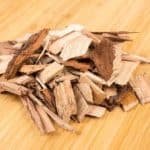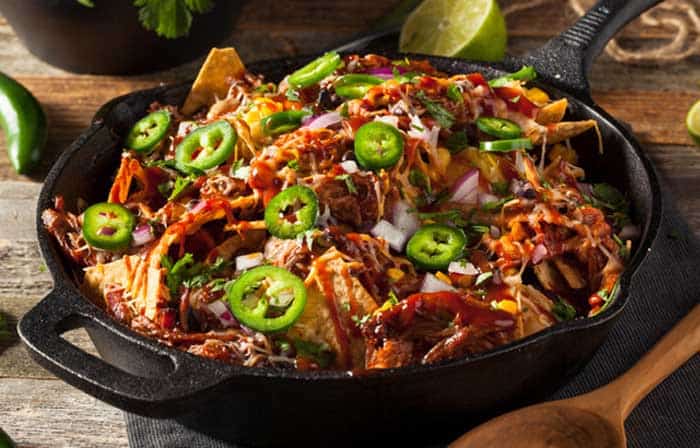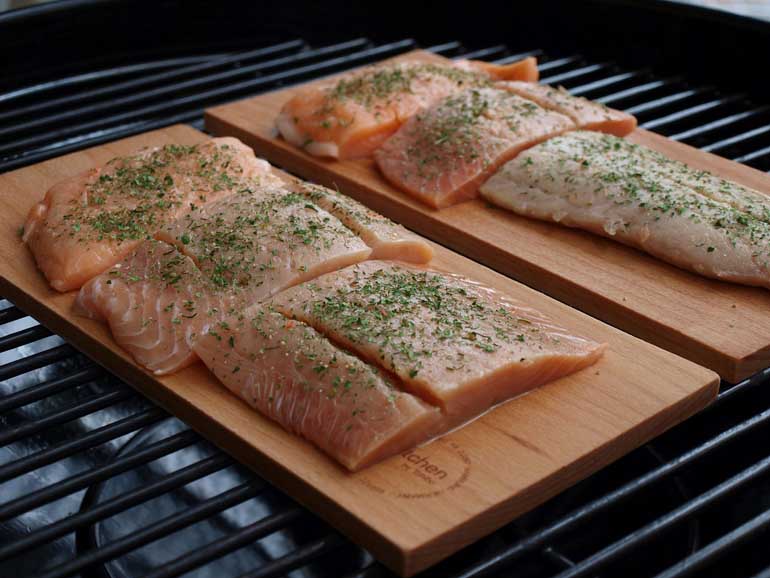Wanting to take your BBQ pork to the next level? Here are 5 of the very best types of wood for smoking pulled pork.

Pulled pork is by far best when smoked. BBQ smoking helps render pork’s fat content to enrich it with flavor. This makes it juicy and tender all throughout the flesh, and absolutely beautiful to eat. This is what makes pulled pork perfect for barbecue smoking.
Not only this, but smoke helps us infuse meat with flavor, helping us further enhance our meat. Choosing the right wood chips is important to help us match the right flavor with our meat.

Get it wrong and you’ll risk ruining all the hours of cooking that you’ve put into your meat.
Today I’m going to break down the five best types of wood that you can use when smoking pulled pork, as well as what to avoid.
Apple
Pork is often best when matched with apple, and the same is also true for pulled pork.
As you would expect, it has a subtle sweet and fruity flavor. It’s also extremely versatile, so no matter what cut of pork you’re using for your pulled pork, it will match perfectly with it.
I think apple is also perfect if you’re planning on mixing BBQ sauce with your finished product.
Keep in mind though that apple wood is very subtle that it can take a while for it to work itself into pork. Perfect if you’re planning on cooking your meat for several hours at a low temperature, but if you’re planning on condensing your cooking time then it might be worth considering something else.
For future reference, if you’re simply just smoking pork tenderloin or rib then it will go perfectly with those as well.
Pecan
Just like with apple, pecan wood matches all types of pork brilliantly. Whether it be bacon, rib, or more importantly, pulled pork.
What sets it apart from apple though is that it has a much richer flavor, and also offers a slightly more nutty taste.
It is a slight and mild flavor, so is perfect for people who like more delicate flavors rather than the robust and pronounced flavors or traditional woods like hickory or oak.
Pro tip: Try making a blend with another fruit wood, like cherry or apple, to add a further layer of nuanced flavor to your wood. If you prefer a more earthy taste, then try blending it with hickory to create a balanced but sweet taste.
Maple
If you notice a pattern forming here then you’ve been paying attention. Pulled pork is fantastic with yet another sweet fruity wood: Maple.
Maple wood chips tend to be a bit more difficult to find in stores, but it’s more than worth the extra effort. It’s sweet subtle, and crazy delicious.
Orange
We’re definitely straying into hard-to-find territory here, but if you ever have the opportunity then I recommend trying to find orange wood for smoking for your next pork cook-off.
It toes just the right side of citrus without being sickly and will put an interesting twist on your next smoking session. It can also be paired with hickory to help ground it in more of a woody flavor.
Peach
Finishing my top is another fruit blend, but this one has a slightly different citrus tinge to it. This time, peach offers more of a floral touch, with far less acidity then woods like orange or apple do.
It’s much more delicate and light in flavor, and goes perfectly with more ‘light’ kinds of pork, like ham. However it’s also brilliant with pulled pork and will definitely make your next batch of pork a talking point!

What to Avoid
For every type of wood that matches perfectly with pork, there’s one that doesn’t at all. Here are a few that you should avoid at all costs.
Alder
Alder is great for more types meat that are more robust in flavor, like beef. This is due to the wood’s strong flavor. However for something more delicate and slight, like pork, it runs the risk of overwhelming it.
Mesquite
Just like alder, mesquite is far too heavy to be used with the majority of pork cuts. It can be used well with pork ribs, but for cuts that require low and slow cooking for the fat to render through large volumes of meat, it’s simply too overpowering.
It has an intense strong and earthy flavor, which means it’s far better used either in smaller quantities, or for richer cuts of meat.
What also doesn’t help it is the fact that its natural oil content makes it extremely vulnerable to burning up and causing flare-ups, which is extremely detrimental to low and slow smoking.










